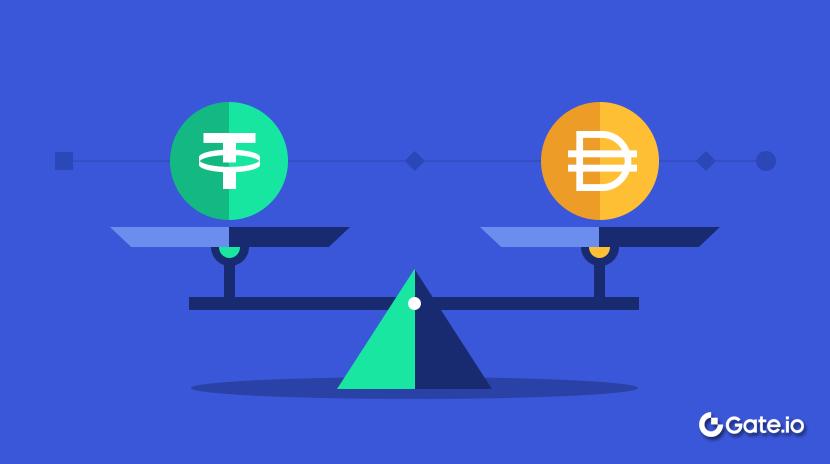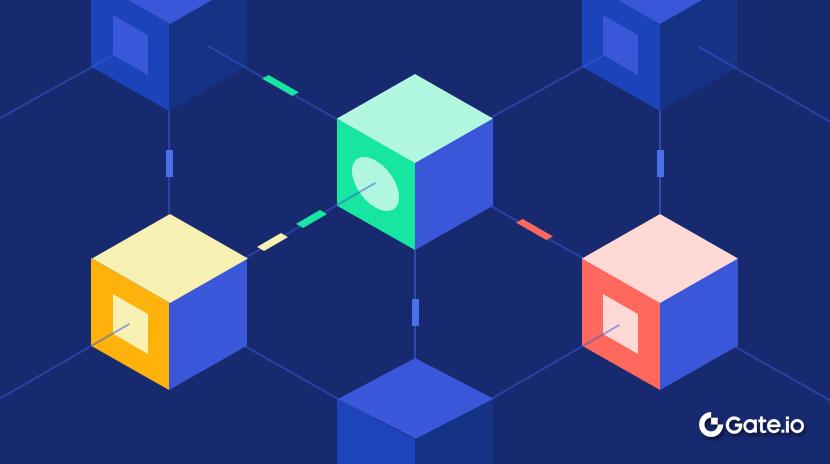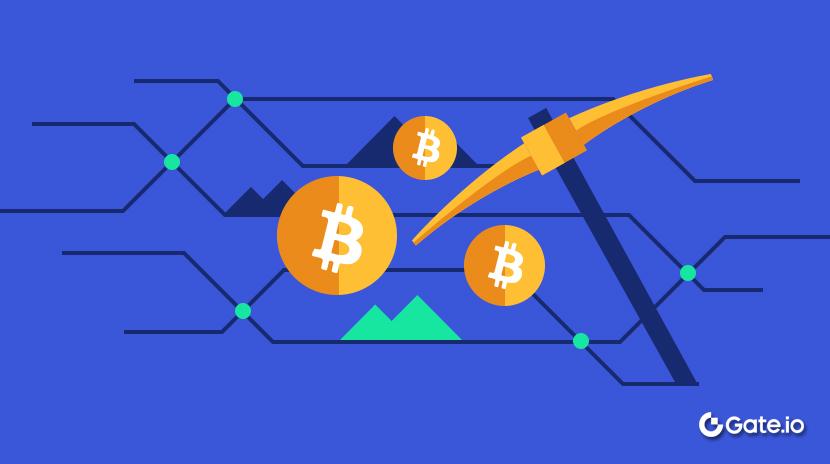Tài liệu White Paper Talus được giải thích: Trung tâm Đại lý Trí tuệ Nhân tạo phi tập trung
Mỗi dự án AI đều đi kèm với một whitepaper phức tạp.
Mặc dù có một tín hiệu ngày càng gia tăng trên thị trường rằng các token AI đang trở nên giống như các meme, việc hiểu nhanh câu chuyện của một dự án AI hot qua whitepaper vẫn rất quan trọng để đánh giá giá trị của các token của nó.
Tháng 2 năm nay, dự án trí tuệ nhân tạo mới Talus Network hoàn thành vòng huy động vốn đầu tiên trị giá 3 triệu đô la, do Polychain Capital dẫn đầu, với sự tham gia của dao5, Hash3, TRGC, WAGMI Ventures và Inception Capital.

Hôm nay Talus cũng đã phát hành White Paper, giải thích thêm về phạm vi kinh doanh và nền kinh tế mã token của nó.
Dưới đây là một tóm tắt về những nội dung quan trọng trong cuốn sách trắng để giúp bạn hiểu nhanh về Talus Network.
L1 cho các đại lý trí tuệ nhân tạo
Talus là một nền tảng được thiết kế để tích hợp Trí tuệ Nhân tạo với công nghệ blockchain. Nó cho phép các đại lý thông minh sống, tương tác và giao dịch trong hệ sinh thái Web3 bằng cách cung cấp một blockchain L1 với khả năng xử lý cao (được cung cấp bởi ngôn ngữ lập trình Move), được cải thiện với một ngăn xếp Trí tuệ Nhân tạo cơ bản.
Bạn có thể coi Talus như trung tâm độc lập của trí tuệ nhân tạo thông minh, giải quyết các vấn đề chính như bảo mật, quyền riêng tư và tính khả dụng dữ liệu, và thúc đẩy sự tương tác minh bạch và hiệu quả trong hệ sinh thái trí tuệ nhân tạo.
Câu chuyện trí tuệ nhân tạo (AI) đương nhiên là một chủ đề hot, nhưng liệu việc thiết kế một L1 dành riêng cho các đại lý trí tuệ nhân tạo có logic không?
Câu trả lời được đưa ra bởi Talus là:
Về mặt sự mở cửa, sự mở cửa và tính tương hợp của các ứng dụng blockchain làm cho việc xem xét, theo dõi và tin tưởng vào hành vi của các đại lý trí tuệ nhân tạo dễ dàng hơn; người dùng cũng dễ dàng tìm thấy đại lý trí tuệ nhân tạo phù hợp nhất dựa trên các hồ sơ hoạt động trong quá khứ có thể xác minh được.
Về mặt tự trị, cơ sở hạ tầng blockchain cho phép các đại lý thông minh tương tác tự động, cho phép họ thực hiện các quyết định kết quả một cách tự động.

Cụ thể, Talus thực sự cho phép thiết kế và triển khai các đại lý thông minh phi tập trung trên chuỗi một cách tự nhiên mà không cần tin cậy, tương tác sử dụng tài nguyên và dịch vụ trên chuỗi và ngoài chuỗi.
Nó thiết lập một giao thức để biểu diễn, sử dụng và giao dịch các đại lý, tài nguyên và dịch vụ này một cách phi phép và có thể xác minh.
Sự kết hợp giữa các thành phần hiện có và các tính năng mới
Vậy, Talus thực hiện nó như thế nào?
Câu trả lời nằm ở sự kết hợp giữa các công nghệ hiện có và khả năng mới. Những thành phần này hoạt động cùng nhau để cung cấp một nền tảng trí tuệ phân quyền, hiệu quả và an toàn. Các thành phần chính, từ lớp dưới cùng đến lớp ứng dụng, có thể được tóm tắt như sau:
- Nút Protochain:
- Tại trung tâm của Talus là một nút blockchain chứng minh cổ phần (PoS) được gọi là Node Protochain dựa trên Cosmos SDK và CometBFT. Lựa chọn này cung cấp tính linh hoạt, độ bền và hiệu suất cao.
- Kiến trúc kỹ thuật này đảm bảo tính bảo mật và khả năng mở rộng của blockchain Talus, cung cấp nền tảng vững chắc cho việc vận hành của các đại lý thông minh.
- Sui Move & MoveVM:
- Talus sử dụng Sui Move làm ngôn ngữ hợp đồng thông minh của mình. Ngôn ngữ Move nổi tiếng với hiệu suất cao, bảo mật và tính lập trình.
- Bằng cách sử dụng Move, Talus có thể tăng cường tính bảo mật của logic on-chain và đơn giản hóa việc tạo, chuyển nhượng và quản lý tài sản kỹ thuật số, từ đó tạo điều kiện cho việc thực thi hợp đồng thông minh hiệu quả hơn.
- Giao thức liên chuỗi (Inter-chain communication protocol):
- Sử dụng IBC (Giao thức Liên-mạng Blockchain), Talus cho phép tương tác mượt mà giữa các blockchain khác nhau, cho phép các tác nhân thông minh tương tác và sử dụng dữ liệu hoặc tài sản trên nhiều blockchain khác nhau.
- IBC cung cấp tính nguyên tử và khả năng mở rộng của giao dịch qua chuỗi, đảm bảo đáng tin cậy và nhất quán trong các hoạt động.
- Đối tượng Gương:
- Talus giới thiệu khái niệm về các đối tượng gương để đại diện và xác thực tài nguyên ngoại chuỗi trên chuỗi, chẳng hạn như các mô hình, dữ liệu và đối tượng tính toán.
- Các đối tượng gương cầu nối khoảng cách giữa nhu cầu tính toán cao của quy trình AI và môi trường blockchain, đảm bảo sự độc đáo và khả năng giao dịch của tài nguyên.
- AI Stack:
- Talus cung cấp SDK và các thành phần tích hợp để hỗ trợ phát triển các tác nhân thông minh và tương tác với các tài nguyên ngoài chuỗi.
- Bộ công nghệ AI cũng bao gồm tích hợp với Oracles, đảm bảo rằng các đại lý thông minh có thể tận dụng dữ liệu ngoại chuỗi để ra quyết định và phản ứng.
- Đại lý Thông minh Onchain:
- Ở cốt lõi, Talus cung cấp một hệ thống kinh tế của các đại lý thông minh có thể hoạt động tự động, đưa ra quyết định, thực hiện giao dịch, và tương tác với các tài nguyên trên chuỗi và ngoài chuỗi.
- Các yếu tố quan trọng của các tác nhân thông minh bao gồm tính tự trị, khả năng giao tiếp xã hội, tính phản ứng và tính chủ động. Tự trị cho phép họ hoạt động mà không cần sự can thiệp của con người, khả năng giao tiếp xã hội cho phép tương tác với các tác nhân và con người khác, tính phản ứng cho phép họ nhận biết sự thay đổi trong môi trường và phản ứng kịp thời, và tính chủ động cho phép họ hành động dựa trên mục tiêu, dự đoán hoặc trạng thái tương lai được dự kiến.

Hình dưới đây cho thấy bản vẽ kiến trúc của đại lý thông minh Talus và giải thích cách các thành phần khác nhau hoạt động cùng nhau.
SDK: Nó là cầu nối giữa các tác nhân thông minh và các thành phần khác như tài nguyên, oracles, UI và hợp đồng thông minh. Nó cung cấp các thư viện và công cụ cần thiết để giúp các nhà phát triển xây dựng và tích hợp các tác nhân thông minh. SDK đơn giản hóa quá trình phát triển và cung cấp một giao diện thống nhất, cho phép các tác nhân thông minh sử dụng hiệu quả các tài nguyên và dịch vụ được cung cấp bởi nền tảng.
Tài nguyên: Bao gồm các mô hình AI, tài nguyên tính toán GPU và các tài nguyên tính toán khác. Những tài nguyên này tương tác với các đại lý thông minh thông qua SDK, cung cấp sức mạnh tính toán cần thiết và hỗ trợ dữ liệu cho các đại lý thông minh. Các mô hình AI có thể là các mô hình được huấn luyện trước mà các đại lý thông minh có thể sử dụng cho suy luận và ra quyết định.
Oracle: Oracles cung cấp dữ liệu bên ngoài cho các đại lý thông minh, giúp họ đưa ra quyết định dựa trên thông tin thế giới thực mới nhất.
Các thành phần giao diện người dùng: Các thành phần giao diện người dùng cho phép người dùng tương tác với các điều hành thông minh. Thông qua giao diện thân thiện với người dùng, người dùng có thể cấu hình, quản lý và theo dõi trạng thái vận hành của các điều hành thông minh.
Qua kiến trúc này, Talus đạt được sự tự trị và phân quyền của các đại lý thông minh, đảm bảo việc sử dụng tài nguyên hiệu quả và sự minh bạch của hệ thống, đồng thời thúc đẩy tích hợp giữa công nghệ AI và blockchain.

Kinh tế Token và Trường hợp Sử dụng
Hạt nhân của hệ sinh thái Talus là token TAI, có nhiều chức năng trên nền tảng. Các vai trò chính của token TAI trong hệ sinh thái Talus là như sau:
- Phương tiện trao đổi: Tất cả các giao dịch, mua sắm tài nguyên và hoạt động giao dịch trong hệ sinh thái đều được tiến hành bằng cách sử dụng các mã thông báo TAI. Điều này đảm bảo rằng tất cả các hoạt động kinh tế trong hệ sinh thái xoay quanh mã thông báo TAI, tăng cường sự lưu thông và nhu cầu của nó.
- Mua các nguồn lực: Nhà cung cấp nguồn lực có thể kiếm được token TAI bằng cách cung cấp sức mạnh tính toán, dữ liệu hoặc mô hình. Lập lại, các nhà phát triển và người dùng có thể sử dụng token TAI để mua các nguồn lực này, thúc đẩy sự phát triển của hệ sinh thái.
- An ninh mạng: Chủ sở hữu mã thông báo TAI có thể tham gia vào cơ chế Bằng chứng cổ phần (PoS) của mạng bằng cách đặt cọc mã thông báo để duy trì bảo mật và đồng thuận mạng, đồng thời nhận phần thưởng tương ứng.
- Quản trị: Người dùng nắm giữ token TAI có thể tham gia vào quản trị nền tảng bằng cách đề xuất và bỏ phiếu cho các quyết định liên quan đến việc cải tiến nền tảng và hướng phát triển, đảm bảo dân chủ và minh bạch của cộng đồng.
Tuy nhiên, bản mô tả dự án vẫn chưa tiết lộ mô hình kinh tế token cho TAI. Chi tiết về token được cho là vẫn đang được thiết kế, chờ đợi thông tin bổ sung.
Về các kịch bản ứng dụng của các đại lý thông minh AI, Talus cung cấp các chức năng sau có thể triển khai trong lĩnh vực Web3:
- Nâng cao trải nghiệm người dùng: Các ví thông minh và công cụ phân tích cung cấp giám sát và phân tích giao dịch và tình trạng tài sản theo thời gian thực, cung cấp trải nghiệm duyệt blockchain và quản lý dự án cá nhân hóa cho người dùng.
- DeFi: Tối ưu hóa quản lý thanh khoản, tự động hóa theo dõi và quản lý danh mục trên chuỗi, và nâng cao hiệu quả và hiệu suất của các ứng dụng DeFi thông qua việc tổng hợp sàn giao dịch thông minh và tối ưu hóa đường đi.
- DAOs: Hỗ trợ quản lý tài chính và tài sản tự động, quản trị dựa trên trí tuệ nhân tạo và hỗ trợ ra quyết định.
- Internet of Things (IoT): Hỗ trợ quản lý hệ sinh thái thiết bị IoT, lên lịch bảo dưỡng thiết bị thông minh, đảm bảo danh tính và an ninh của thiết bị IoT, và tối ưu hóa quản lý logistics và chuỗi cung ứng.
- Gaming / SocialFi: Câu chuyện trên chuỗi được cá nhân hóa, quản lý nền kinh tế ảo, NPC thông minh và mạng xã hội giữa các tác nhân mang đến những trải nghiệm và phương pháp tương tác mới cho các ứng dụng game và xã hội.
- Hệ sinh thái Trí tuệ Nhân tạo và Dữ liệu: Hỗ trợ sự hợp tác giữa các nhà phát triển mô hình và các nhà cung cấp dữ liệu, khuyến khích sự phát triển và tiếp thị các mô hình Trí tuệ Nhân tạo chuyên ngành, sử dụng và tiếp thị dữ liệu và tài nguyên máy tính một cách hiệu quả, và hỗ trợ mô hình gọi vốn cộng đồng cho nghiên cứu và phát triển.
Từ nội dung được cung cấp trong bản báo cáo trắng hiện tại, Talus chỉ đã làm rõ phạm vi của dự án và các trường hợp sử dụng. Không có nhiều thuyết trình về các chi tiết kỹ thuật hơn, mô hình kinh tế và hiệu quả thực tế, điều này phù hợp với việc phát hành phiên bản “Litepaper”.
Tuy nhiên, không thể phủ nhận rằng có sự cạnh tranh gay gắt trong lĩnh vực AI, và các dự án có hiệu suất đáng kỳ vọng trong danh mục AI agent đang nổi lên liên tiếp. Cách Talus chọn thời điểm và yếu tố kích thích đúng để khởi động mạng lưới của mình và khuyến khích người dùng có thể trở thành yếu tố quyết định trong thành công hoặc thất bại của chiến lược niêm yết của mình.
Cuối cùng, trong tình hình thị trường hiện tại nơi mà các khoản đầu tư VC được đặt cược, FDV cao, và các token có lưu thông thấp là phổ biến, việc thu hút thêm người dùng tham gia và gây ấn tượng cho cộng đồng với sản phẩm và công nghệ vững chắc là các sáng kiến then chốt để các dự án trí tuệ nhân tạo hàng đầu thu được giá trị.
Tuyên bố:
Bài viết này ban đầu có tựa đề là “Talus White Paper Explained: Trung tâm Đại lý Trí tuệ nhân tạo Phi tập trung” được sao chép từ [ techflow]. Tất cả bản quyền thuộc về tác giả gốc [TechFlow của Gate.com]. Nếu bạn có bất kỳ sự phản đối nào về việc sao chép, vui lòng liên hệ với Cổng Họcđội ngũ, đội ngũ sẽ xử lý nó càng sớm càng tốt.
Xin lưu ý: Các quan điểm và ý kiến được thể hiện trong bài viết này chỉ đại diện cho quan điểm cá nhân của tác giả và không cung cấp bất kỳ lời khuyên đầu tư nào.
Các bản dịch của bài viết sang các ngôn ngữ khác được thực hiện bởi nhóm Gate Learn. Trừ khi được đề cập, việc sao chép, phân phối hoặc đạo văn các bài viết dịch là không được phép.
Bài viết liên quan

Tronscan là gì và Bạn có thể sử dụng nó như thế nào vào năm 2025?

Coti là gì? Tất cả những gì bạn cần biết về COTI

Stablecoin là gì?

Mọi thứ bạn cần biết về Blockchain

HODL là gì


